来源:天线空间
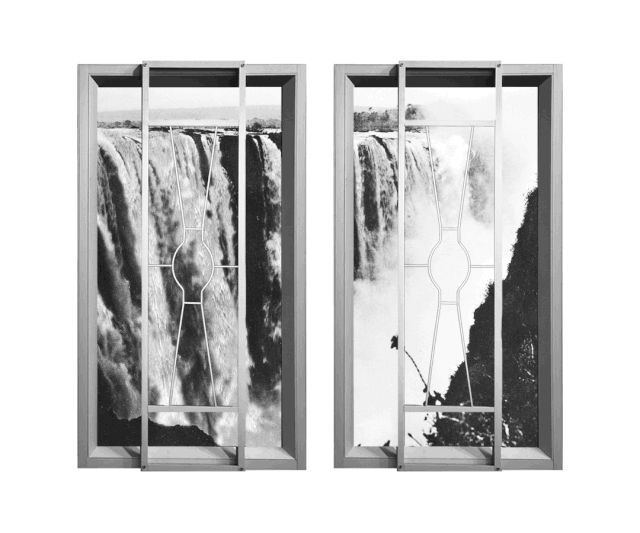
Cataract, 2012, GIF animation, Dimensions variable 尺寸可变
唐纳天的科幻创作经常以装置和情境创造一种双关式的语言游戏。其中,文学或视觉的文本,会混杂着科学、数学及生物学材料的使用。而日常材料也经常被放进这些场景中,提示着这些科幻事物实际上在生活周遭如何现身。他以复杂的布景方式探索影像的技术—历史性质及其与现实的不稳定关系。在唐纳天的装置作品中,城市居住者的心理活动常以心理戏剧的方式表现出来——其中,物体存在于自身与其影像的暧昧关系之中,身体则屈服于空间的诱惑力。
“从我记事起,我就一直是科幻小说的超级粉丝——不管是文学还是电影。自然,这对我的创作思维过程产生了重大影响,有时我甚至尝试直接将“科幻”叙事元素融入到某些作品中,并取得了不同程度的成功。科幻小说有着对未来、太空探险和外星生命形式的投机性幻想,把它说成是一种基于特定限制或约束的形式似乎有点牵强。
然而,仔细观察就会发现,这正是科幻小说所做的; 它是任何事情,但“任何事情都会逝去”。套用Philip K Dick的概念;科幻小说不能简单地用它的背景,比如说在一个科技发达的未来,来定义。而是“这是我们的世界被作者的某种精神努力弄乱了,我们的世界变成了它现在不是或者还不是的样子。”[…]在这种混乱中必须有一个连贯的思想; 也就是说,这种错位必须是一种概念上的错位,而不仅仅是一种琐碎或奇异的错位。“‘
——唐纳天《A Limit Next to the Indefinite》2011(节选)

Mixedmedia installation w/ durational performance
在第12届上海双年展中,艺术家在上海当代艺术博物馆挑选了四个不同氛围的空间,摆放定制的家具装置,并安排演员穿戴与周围环境在颜色、形态上非常接近的制服和面具,扮演着类似“宅男”的形象,以此隐藏于环境之中,抑或被环境吞没。
在这个略显科幻的当下,每个人似乎都被迫变成了唐纳天作品中的“宅男”。而此时,艺术家向我们分享了他于2012年制作的一个GIF动画。动画中,通过呈现钥匙形状的窗户,观者可以望见奔腾而下的瀑布。这个GIF动是“tr**elling without moving”这个概念的先驱,他在尤伦斯当代艺术中心举办的个展“最后媒介”中以更复杂的方式发展了这个概念。唐纳天将UCCA的长廊转化为一件单独的作品《最后媒介》(The Last Vehicle,2016年),将空间分割成两个既独立、又关联的部分:一部分为异域化的景观,另一部分为室内的生活空间。“媒介”指涉装配着假眼与无线传感设备的遥控车,将异域化的景观及其独处居民的直播画面传递给室内空间中久坐着观看屏幕的探索者。在此,不同时空坐标中的影像上演着摧毁与再生的持续性循环,艺术家试图探讨由通讯或模拟设备加速生产、传播的影像如何操纵、甚至替代现实的经验。
“《最后的媒介》last vehicle这个词从最简单、最直接的意义上来说是指沙地景观里面的沙地车,但也不适合过于直接地理解。《最后的媒介》的名称直接从法国作家保罗·维利里奥的一篇文章引用过来的。他讨论的是距离与文化的问题,工业革命之后,人类发展出来的汽车,轮船,飞机这些媒介都加快了速度,缩短了距离,这种距离的缩小如何改变当代人的生活是保罗所讨论。回到这个名字《最后的媒介》,我们现在从物理上的距离,转换到了形而上,比如说在作品中遥控车是通过无线信号进行的操纵的,实际物理上距离的缩短在last vehicle上变成了一种抽象式的、形而上的距离缩短,现在我们要跟在美国人的视频,这个距离等于说是没有距离,距离已经没有了。”
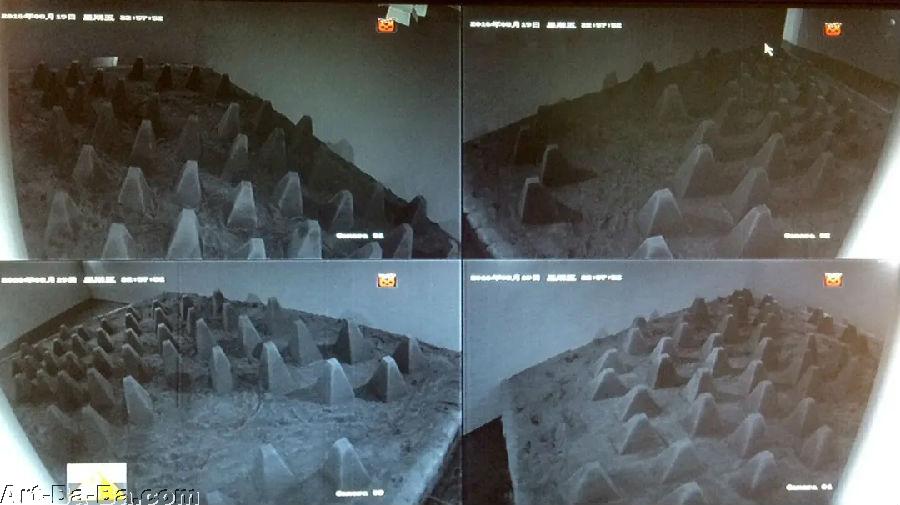
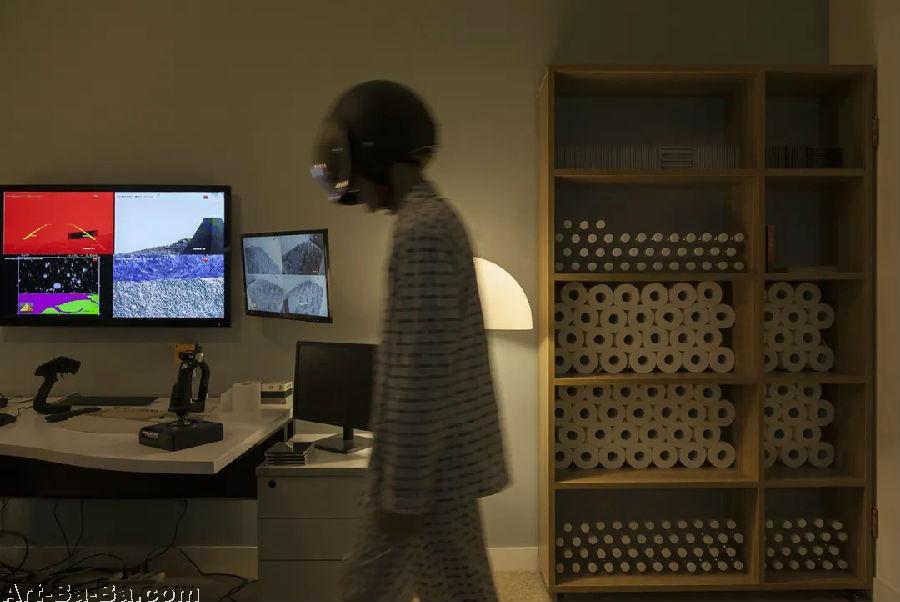
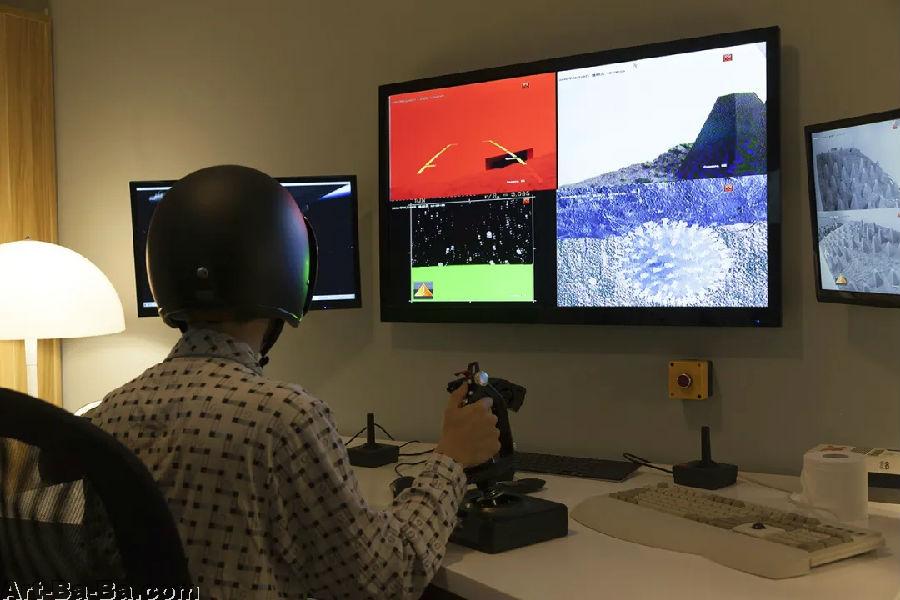
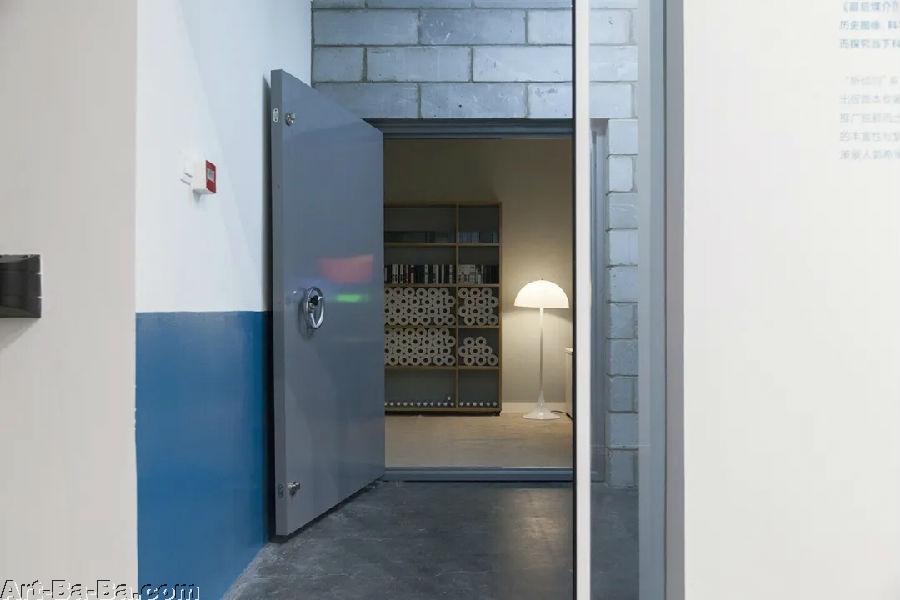
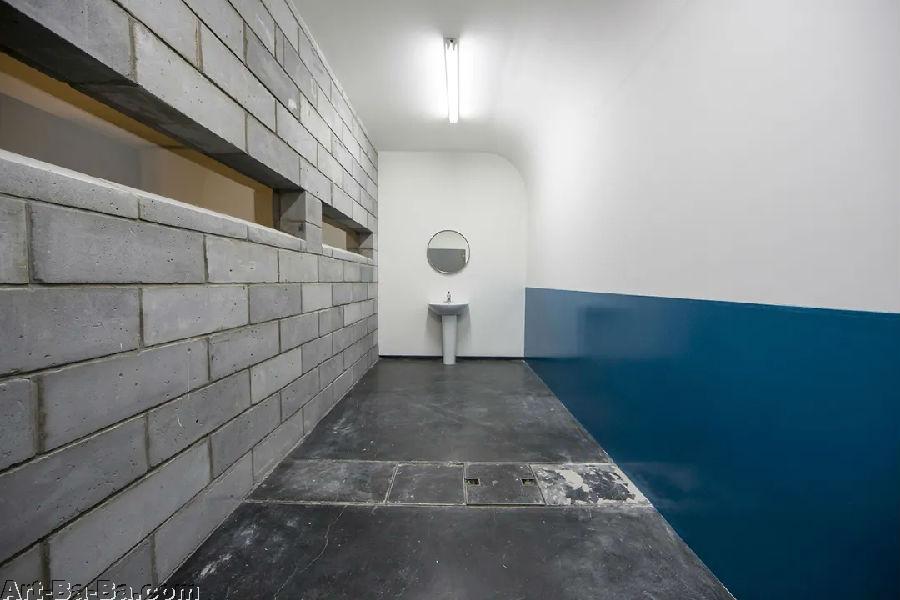



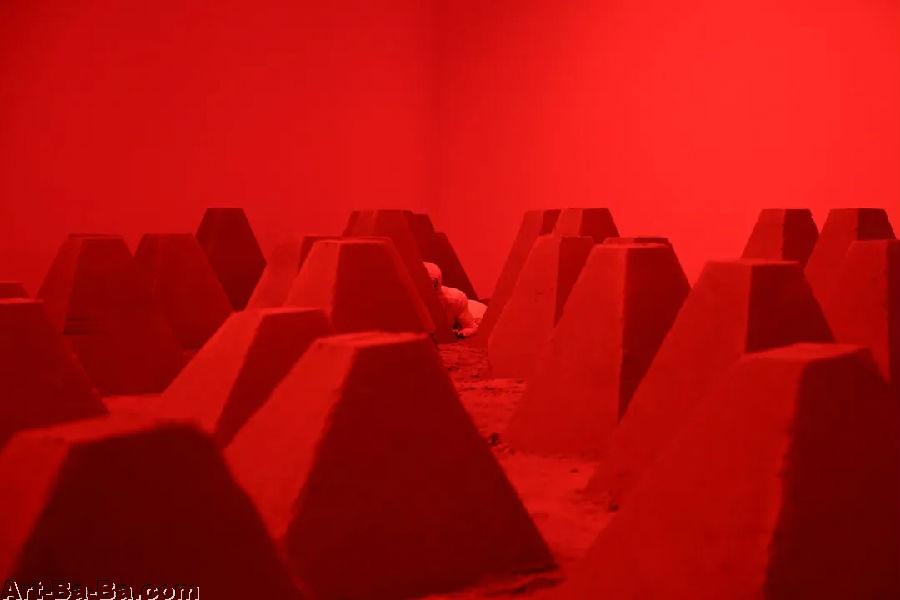
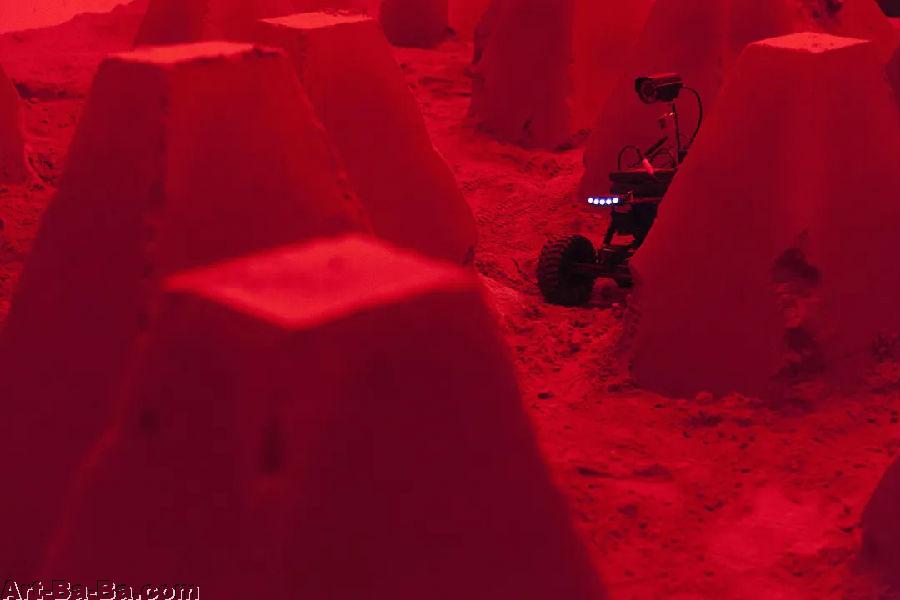
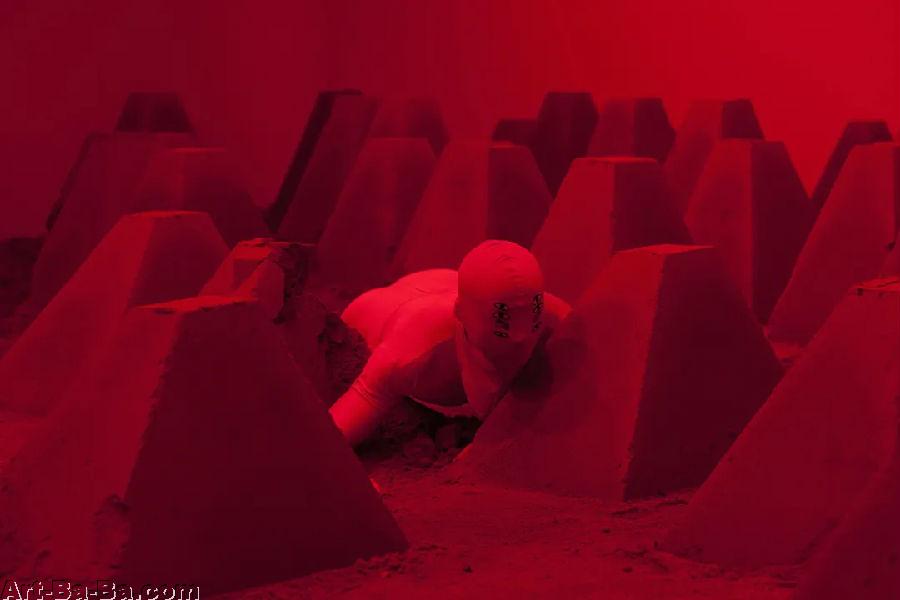
The Last Vehicle 最后媒介,2016
Mixedmedia installation w/ durational performance
综合材料装置、持续性表演
Dimensions variable 尺寸可变
而在艺术家的另外一组作品The Scale of the Universe中,这些输出可以被看作对是一系列图像模糊性的代表之反思,这些图像是用肉眼无法看到的东西(要么是因为太危险,太远,太小等等),包括一整套科学或文献图像,例如切尔诺贝利灾难的电视镜头,NASA太空探索的图像以及病毒和细菌的显微图像。使用这些图像作为参考点,艺术家构建了一个虚构的,由照片,GIF动画,图形形成的档案库。在这里,事物的规模变得混乱了-噬菌体可能类似一个空间站,或者一个小卵石,一个小行星。所有图像的内容都是由你可能在厨房里找到的日常食物组成的,所以这也是一个厨房项目。平凡的环境经介入,变得难以辨认。而我们身处的平凡也似乎被一些微小的东西改变,转而成为陌生。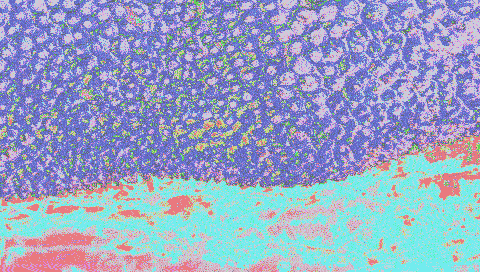
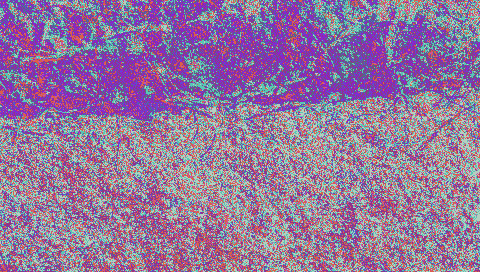
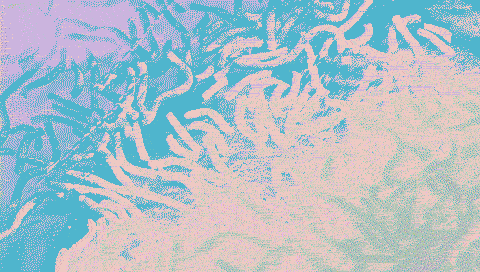
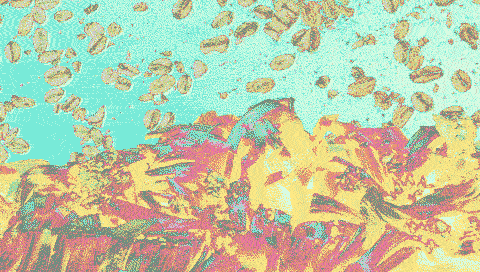
The Scale of the Universe,2012GIF animations of foods tuffsand kitchen accessories (set of 4) 在最后,艺术家和我们分享了一篇由Olivia Laing撰写的文章《The future of loneliness》。我们摘选了部分在此分享。
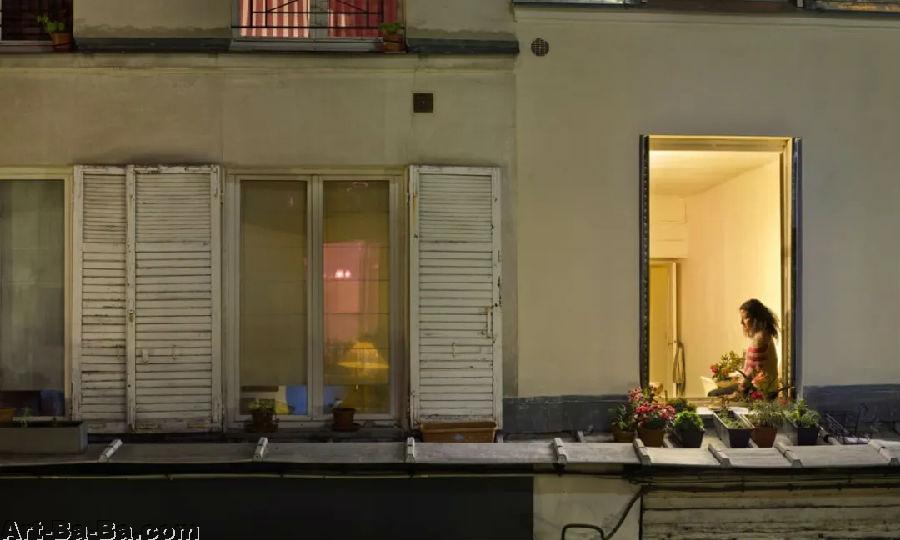
An image from a series titled Out my Window. Photograph: Gail Albert Halaban
As we moved our lives online, the internet promised an end to isolation. But can we find real intimacy amid shifting identities and permanent surveillance?At the end of last winter, a gigantic billboard advertising Android, Google’s operating system, appeared over Times Square in New York. In a lower-case sans serif font – corporate code for friendly – it declared: “be together. not the same.” This erratically punctuated mantra sums up the web’s most magical proposition – its existence as a space in which no one need ever suffer the pang of loneliness, in which friendship, sex and love are never more than a click away, and difference is a source of glamour, not of shame.As with the city itself, the promise of the internet is contact. It seems to offer an antidote to loneliness, trumping even the most utopian urban environment by enabling strangers to develop relationships along shared lines of interest, no matter how shy or isolated they might be in their own physical lives.But proximity, as city dwellers know, does not necessarily mean intimacy. Access to other people is not by itself enough to dispel the gloom of internal isolation. Loneliness can be most acute in a crowd.In 1942, the American painter Edward Hopper produced the signature image of urban loneliness. Nighthawks shows four people in a diner at night, cut off from the street outside by a curving glass window: a disquieting scene of disconnection and estrangement. In his art, Hopper was centrally concerned with how humans were handling the environment of the electric city: the way it crowded people together while enclosing them in increasingly small and exposing cells. His paintings establish an architecture of loneliness, reproducing the confining units of office blocks and studio apartments, in which unwitting exhibitionists reveal their private lives in cinematic stills, framed by panes of glass.More than 70 years h**e passed since Nighthawks was painted, but its anxieties about connection h**e lost none of their relevance, though unease about the physical city has been superseded by fears over our new virtual public space, the internet. In the intervening years, we h**e entered into a world of screens that extends far beyond Hopper’s unsettled vision.Loneliness centres on the act of being seen. When a person is lonely, they long to be witnessed, accepted, desired, at the same time as becoming intensely wary of exposure. According to research carried out over the past decade at the University of Chicago, the feeling of loneliness triggers what psychologists call hypervigilance for social threat. In this state, which is entered into unknowingly, the individual becomes hyperalert to rejection, growing increasingly inclined to perceive social interactions as tinged with hostility or scorn. The result is ***icious circle of withdrawal, in which the lonely person becomes increasingly suspicious, intensifying their sense of isolation.Behind a computer screen, the lonely person has control. But the contact this produces is not the same thing as intimacy.
This is where online engagement seems to exercise its special charm. Hidden behind a computer screen, the lonely person has control. They can search for company without the danger of being revealed or found wanting. They can reach out or they can hide; they can lurk and they can show themselves, safe from the humiliation of face-to-face rejection. The screen acts as a kind of protective membrane, a scrim that allows invisibility and transformation. You can filter your image, concealing unattractive elements, and you can emerge enhanced: an online **atar designed to attract likes. But now a problem arises, for the contact this produces is not the same thing as intimacy. Curating a perfected self might win followers or Facebook friends, but it will not necessarily cure loneliness, since the cure for loneliness is not being looked at, but being seen and accepted as a whole person – ugly, unhappy and awkward, as well as radiant and selfie-ready.This aspect of digital existence is among the concerns of Sherry Turkle of the Massachusetts Institute of Technology, who has been writing about human-technology interactions for the past three decades. She has become increasingly wary of the capacity of online spaces to fulfil us in the ways we seem to want them to. According to Turkle, part of the problem with the internet is that it encourages self-invention. “At the screen,” she writes in Alone Together (2011), “you h**e a chance to write yourself into the person you want to be and to imagine others as you wish them to be, constructing them for your purposes. It’s a seductive but dangerous habit of mind.”But there are other dangers. My own peak use of social media arose during a period of painful isolation. It was the autumn of 2011, and I was living in New York, recently heartbroken and thousands of miles from my family and friends. In many ways, the internet made me feel safe. I liked the contact I got from it: the conversations, the jokes, the accumulation of positive regard, the f**ouriting on Twitter and the Facebook likes, the little devices designed for boosting egos. Most of the time, it seemed that the exchange, the gifting back and forth of information and attention, was working well, especially on Twitter, with its knack for prompting conversation between strangers. It felt like a community, a joyful place; a lifeline, in fact, considering how cut off I otherwise was. But as the years went by – 1,000 tweets, 2,000 tweets, 17,400 tweets – I had the growing sense that the rules were changing, that it was becoming harder to achieve real connection, though as a source of information it remained unparalleled.This period coincided with what felt like a profound shift in internet mores. In the past few years, two things h**e happened: a dramatic rise in online hostility, and a growing awareness that the lovely sense of privacy engendered by communicating via a computer is a catastrophic illusion. The pressure to appear perfect is greater than ever, while the once‑protective screen no longer reliably separates the domains of the real and the virtual. Increasingly, participants in online spaces h**e become aware that the unknown audience might at any moment turn on them in a frenzy of shaming and scapegoating.The atmosphere of surveillance and punishment destroys intimacy by making it unsafe to reveal mistakes and imperfections. My own sense of ease on Twitter diminished rapidly when people began posting photos of strangers they had snapped on public transport, sleeping with their mouths open. Knowing that the internet was becoming a site of shaming eroded the feeling of safety that had once made it seem such a h**en for the lonely.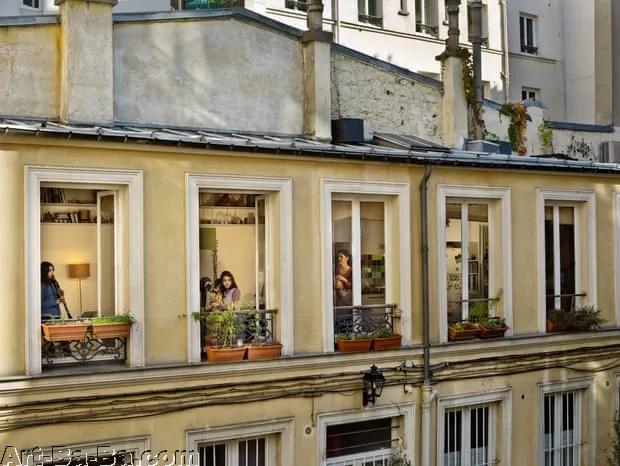
Photograph: Gail Albert-Halaban courtesy of Edwynn Houk Gallery
Back in 1999, the critic Bruce Benderson published a landmark essay, Sex and Isolation, in which he observed: “We are very much alone. Nothing le**es a mark. Today’s texts and images may look like real carvings – but in the end they are erasable, only a temporary blockage of all-invasive light. No matter how long the words and pictures stay on our screens, there will be no encrustation; all will be reversible.”Benderson thought the transience of the internet was the reason that it felt so lonely, but to me it is far more alarming to think that everything we do there is permanent. At that time – two years before 9/11, and 14 years before Edward Snowden exposed the intrusive surveillance it had set in motion – it was no doubt impossible to imagine the grim permanence of the web to come, where data has consequences and nothing is ever lost – not arrest logs, not embarrassing photos, not Google searches of child porn or embarrassing illnesses, not the torture records of entire nations.
Faced with the knowledge that nothing we say, no matter how trivial or silly, will ever be completely erased, we find it hard to take the risks that togetherness entails. But perhaps, as lonely people often are, I am being too negative, too paranoid. Perhaps we are capable of adapting, of finding intimacy in this landscape of unprecedented exposure. What I want to know is where we are headed. What is this sense of perpetual scrutiny doing to our ability to connect?
唐纳天1980年生于香港,其作品探索了知觉的技术,建构了一系列复杂的场景——其中,物体存在于自身与其影像的暧昧关系之中,身体则屈服于空间的诱惑力。2014年,唐纳天被授予亚洲文化协会Altius奖学金,以及由香港艺术发展局颁发的“香港艺术发展奖之艺术新秀奖”。近期展览包括:“幽灵维面——电驭叛客在未来之年”,大馆当代美术馆,香港(2019); “可怜的玩具”,VITRINE空间(巴塞尔,2019);第12届上海双年展主题: 禹步(上海,2018);P-Scape公共雕塑项目(香港,2018);“伪装者”,VITRINE空间(伦敦,2017);“幻兽”,天线空间(上海,2016);“最后媒介”,尤伦斯当代艺术中心(北京,2016);“环绕观众”,新美术馆三年展(纽约,2015),与釜山双年展(2014)。
Nadim Abbas was born 1980 in Hong Kong. His work explores technologies of perception, culminating in the construction of complex set pieces where objects exist in an ambiguous relationship with their own image, and bodies succumb to the seduction of space. Abbas was awarded with the Asian Cultural Council Altius Fellowship and the HK Arts Development Award (Young Artist / Visual Arts) in 2014. Recent exhibitions include: “Phantom Plane, Cyberpunk in the Year of the Future”,Tai Kwun, Hong kong (2019); “Poor Toy”, VITRINE, Basel (2019); "the 12th Shanghai Biennale: Proregress", Shanghai (2018); “Camoufleur”, VITRINE,London (2017);“Chimera”, Antenna Space, Shanghai (2016); “The Last Vehicle”, UCCA, Beijing (2016);“New Museum Triennial: Surround Audience”, New York (2015); and Busan Biennale (2014).


















